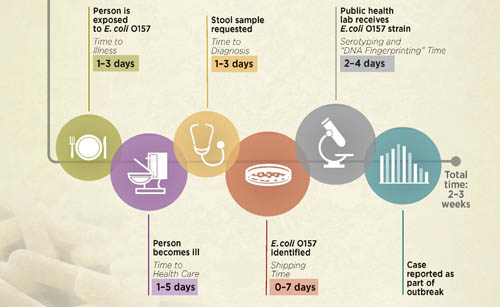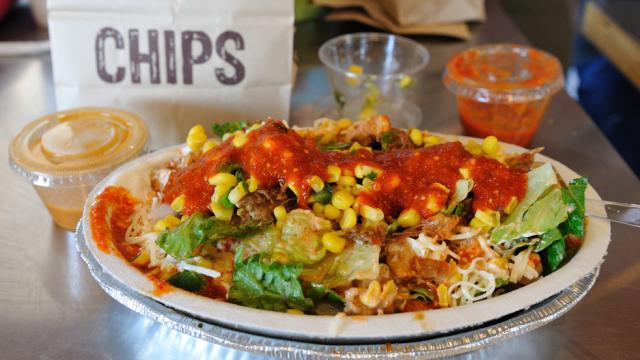US restaurant chain Chipotle recently announced it would be closing up shop across America for a few hours as part of its attempt to halt its ongoing E. Coli outbreak. But why hasn’t the company been able to stop the outbreak, or even find the source yet? The answer is in the bacteria.
To understand the problem, ask yourself a simple question: What’s everything you’ve eaten in the last four days? If you find that difficult to answer at the spur of the moment, you’ve basically sussed out the problem of E. coli tracking.
Some bacteria get people sick within hours, and in those cases it’s fairly simple to find and test a source. E. coli, however, usually takes from three to ten days to hit. By the time a common food among all the people who are ill has been traced to a particular kitchen, whatever ingredient that was getting people sick is most likely gone, making simple testing an impossibility.

Chart: E. Coli timeline / CDC
Which means that when tracking E. coli, you’re almost always weeks behind the curve — and once someone has gotten sick, there’s even more time devoted to confirming that it’s really E. coli and that every illness is part of the same outbreak. Combined, each case takes almost up to three weeks to confirm.
Food security theatre
Tracing E. coli is essentially detective work, and like most detective work, the majority of it is neither glamorous nor showy. Instead, the details are gleaned by combing through statistics, medical records and lab reports. The behind-the-scenes nature of the actual investigation — combined with the very public nature of the outbreaks themselves — can lead to what’s essentially food security theatre. In other words, measures are taken more to show action than to actually trace and end the outbreak.
How does an E. coli outbreak actually end? The most foolproof method is to figure out which ingredient caused it in the first place. Although widespread food safety training is a good idea, if the source is an ingredient that remains contaminated, it probably won’t solve the problem.
E. coli in a petri dish image from Shutterstock
